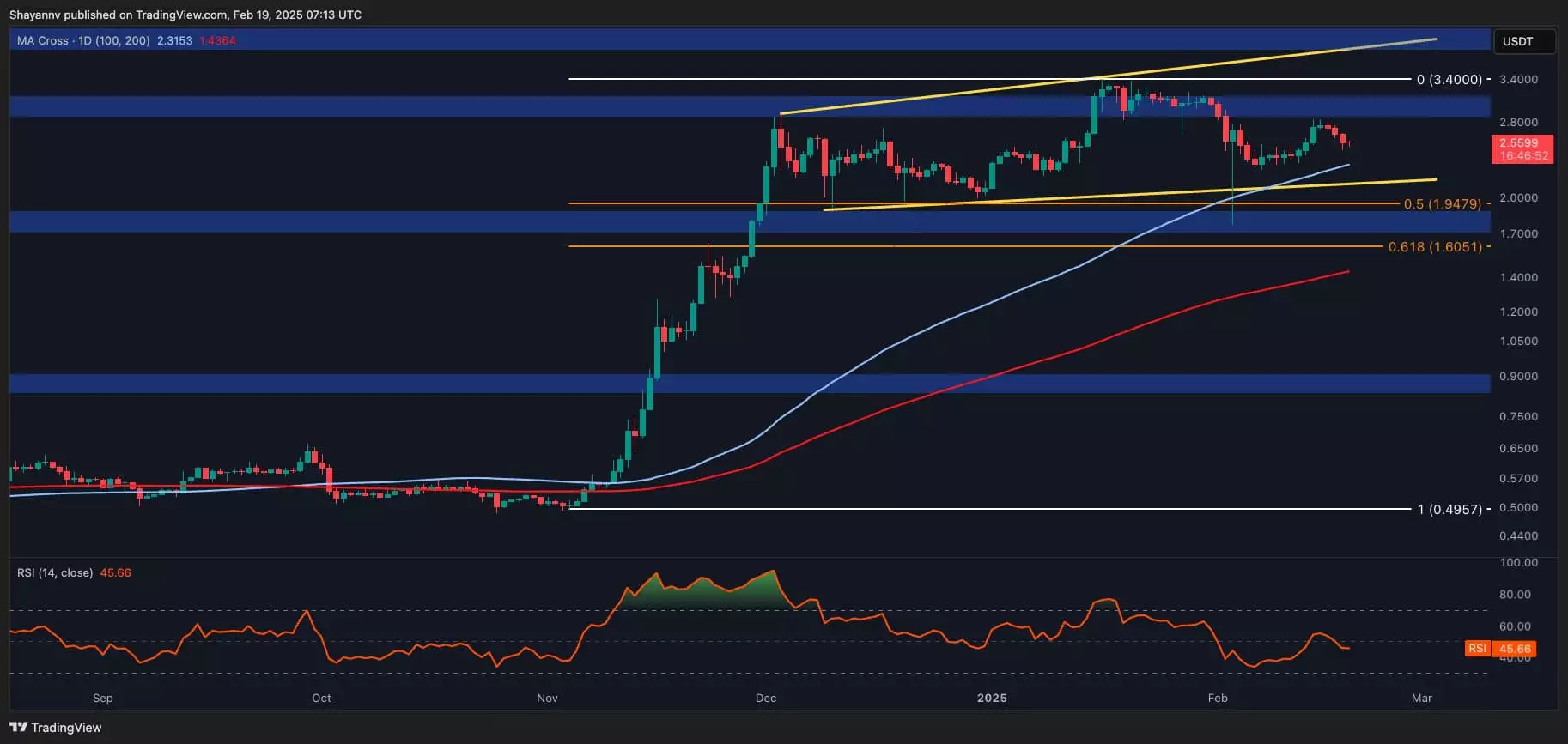Ripple (XRP) has recently encountered resistance at the $2.8 threshold, prompting a minor downturn in its market value. This rejection raises questions about the asset’s short-term viability, particularly given the prevailing market conditions which appear fragmented and indecisive. Nevertheless, the presence of significant support zones suggests that a bullish rebound might be on the horizon. Such duality in market sentiment reflects the complexities often seen in cryptocurrency trading, where bullish and bearish forces continuously vie for dominance.
Analyzing the technical aspects of Ripple’s price trajectory, it is evident that the cryptocurrency is tracing an expanding wedge pattern. This formation typically signals indecision, indicating that while the asset has failed to break through immediate resistance, it also has not succumbed to complete downward pressure. Key support levels are vital in this landscape, particularly the 100-day moving average located at $2.3, which has historically served as a crucial defensive barrier.
The importance of these support zones cannot be overstated. In addition to the aforementioned moving average, the $2.0 threshold serves as a psychological and technical support level. Intriguingly, further down, the Fibonacci retracement levels between $1.9 and $1.6 offer additional layers of support, particularly with the 0.5 and 0.618 levels being intertwined with broader trading strategies. Such confluence creates a buffer, enhancing the possibility of a significant rebound should prices move closer to these lower boundaries.
From a short-term perspective, the rejection at the $2.8 mark signifies a crucial moment for Ripple. If the price continues to oscillate within the current wedge without breaking below key support, consolidation appears to be the most likely outcome. On the 4-hour chart, it is glaringly apparent that the asset has met resistance, marking a turning point in price action.
The dynamic nature of this support at $2.3—indicating an ascending wedge’s lower boundary—suggests that it is a pivot point. However, risk remains. If Ripple breaks below this essential juncture, it could trigger a cascade effect, sending prices toward the crucial $2.0 level. Such scenarios often occur during periods of long liquidation, where heightened selling pressure amplifies downward movements.
While current price movements suggest that Ripple is at a critical juncture, the asset retains a robust set of support levels that may facilitate a bullish rebound in the long run. Traders and investors should keep a close eye on the behavior around $2.3 and the broader wedge structure, as these elements will likely dictate short-term performance. Ultimately, the balance of buyer and seller activity will determine Ripple’s trajectory, making it essential for market participants to remain vigilant amidst the fluctuating landscape.


Leave a Reply